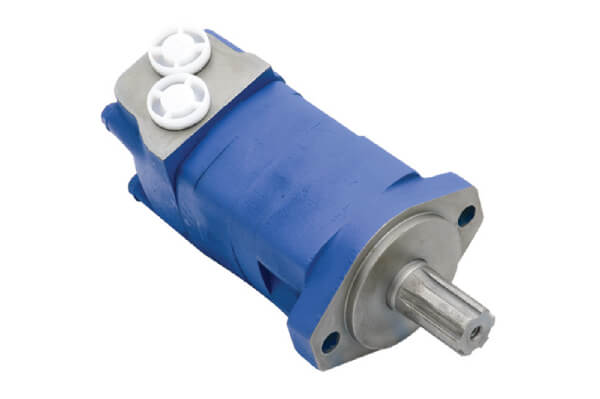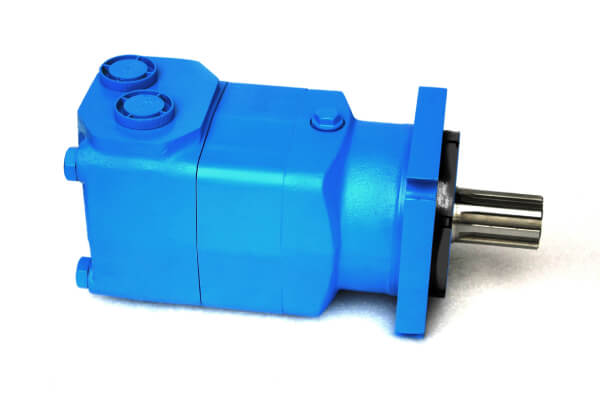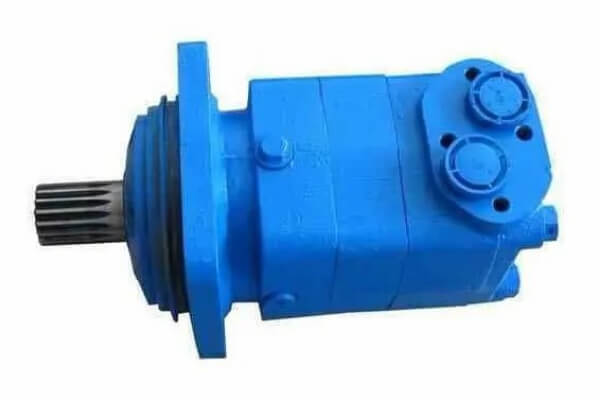A hydraulic orbital motor, also known as a gerotor or geroller motor, operates based on the principles of fluid dynamics and mechanical motion to convert hydraulic energy into rotational mechanical energy. Here’s a detailed explanation of how it works:

Components of a Hydraulic Orbital Motor
1.Rotor and Stator: The motor consists of an inner rotor and an outer stator. The rotor is connected to the output shaft, and the stator has a series of interlocking lobes or rollers that create pockets for fluid movement.
2.Valve Plate: This component directs the hydraulic fluid into the motor and controls its flow through specific channels, ensuring efficient operation.
3.Shaft and Bearings: The output shaft transfers the rotational energy to the connected machinery. Bearings support the shaft, reducing friction and wear.
4.Housing: The outer casing encloses and protects the internal components, providing structural integrity and shielding against environmental factors.
Operating Principle
1.Hydraulic Fluid Inflow: Pressurized hydraulic fluid enters the motor through the valve plate. The valve plate’s design ensures the fluid is channeled into the right areas of the motor.
2.Gerotor or Geroller Mechanism:
Gerotor Design: The inner rotor has one less lobe than the outer stator, creating a series of expanding and contracting chambers as the rotor turns. This imbalance is crucial for generating the rotational movement.
Geroller Design: Rollers are used between the rotor and stator, reducing friction and wear while improving efficiency. The rollers follow the contours of the stator, enhancing the fluid dynamics and torque generation.
3.Rotation and Power Generation: As the hydraulic fluid enters the expanding chambers, it exerts pressure on the rotor, causing it to turn. The fluid then moves through the contracting chambers, maintaining continuous rotation. This movement is smooth and consistent, ensuring reliable power output.
4.Fluid Outflow: After transferring its energy to the rotor, the hydraulic fluid exits the motor through the valve plate and returns to the hydraulic system’s reservoir. This cyclical process allows for continuous operation.
5.Output Shaft Movement: The rotor’s rotation is transferred to the output shaft, generating mechanical power that can be used to drive various machinery and equipment. The design of the shaft and its connection to the rotor ensure minimal energy loss and high efficiency.

Key Features
1.Low-Speed, High-Torque: Hydraulic orbital motors are designed to provide high torque at low rotational speeds, making them suitable for applications requiring strong, steady power. This characteristic is essential for tasks that demand substantial force without high speed.
2.Compact and Robust Design: Their simple construction and durable materials make them reliable and efficient in demanding environments. The compact size allows for easy integration into different systems.
3.Versatility: They can be used in various industries, including construction, agriculture, material handling, and marine applications. This versatility is due to their adaptability to different power requirements and environmental conditions.
Applications
1.Agricultural Equipment: Used in harvesters, sprayers, and conveyors, hydraulic orbital motors provide the necessary torque to perform heavy-duty tasks efficiently. Their robustness ensures they can withstand harsh agricultural environments.
2.Construction Machinery: Operates in excavators, trenchers, and compactors, providing the power needed for heavy lifting and digging operations. Their durability and high torque output make them ideal for construction applications.
3.Material Handling: Powers conveyors, winches, and lifts, ensuring smooth and reliable movement of materials. The continuous and consistent power output is crucial for maintaining operational efficiency in material handling.
4.Marine Equipment: Used in winches, cranes, and thrusters, where reliability and power are critical. Their ability to operate efficiently in marine environments makes them indispensable for maritime operations.

Conclusion
Hydraulic orbital motors are essential components in various industrial applications due to their ability to convert hydraulic energy into efficient mechanical rotation. Their design, which includes key components like the rotor, stator, valve plate, and bearings, ensures high performance and reliability. Whether in agriculture, construction, material handling, or marine industries, hydraulic orbital motors provide the necessary torque and durability to meet demanding operational needs. By understanding their working principles and key features, one can appreciate their role in modern machinery and equipment.
Post time: Jul-26-2024
